The Terradrift giveaway is on! Enter here for a chance to win over $1,000 in outdoor gear!
Anybody who’s ever played outside with me knows I love to chat. Whether I’m snowboarding, cycling, hiking, or kayaking, being outdoors is just another opportunity to not only connect with nature but also with any friends and family enjoying nature with me. So I was stoked to test out the Cardo Packtalk Outdoor intercom system during my first season learning how to snowboard.
After all, I love intercom systems so very much for so many other outdoor activities. You’ve probably seen our reviews of Sena intercom helmets and the versatile Sena Pi, technology we adore because it effectively changed the way that Josh and I mountain bike. Suddenly, as soon as we strapped on an intercom device, mountain biking became more of a fun, connected group activity than a solo adventure where we just ride along behind one another and yell at each other over whatever noise surrounds us at stoplights or trail intersections.
So I was eager yo see if the Cardo Packtalk Outdoor system, which is geared more toward snowboarding, skiing, and other extreme sports like rock climbing and paragliding, things that require safety helmets, did the same for other sports. So I took it to the slopes at RED Mountain Resort in Rossland, Canada and put it to the test.
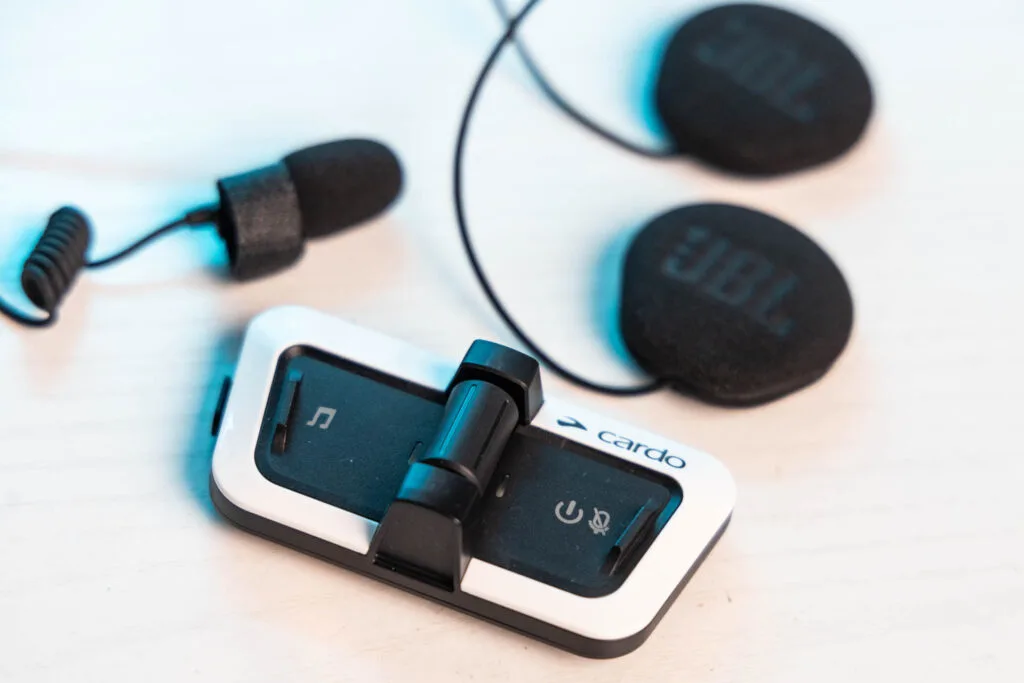
Cardo Packtalk Outdoor: How it Works
The Cardo system is similar in theory but set up a little differently from devices like the Sena pi, a super portable, low-profile device that fits perfectly on a bike helmet. For example, the Cardo puts an emphasis on sound quality, versatility, and increased functionality.
First things first: there are a lot of things about the Cardo Packtalk Outdoor that are really cool. First of all, it’s fairly quick and easy to set up. There’s no cell signal required, and if you just want to quickly use the intercom, you don’t even need to download the Cardo app, though it is helpful for dialing in custom settings, updating software, and using your phone to switch from call mode to intercom mode.
Yup, you can talk on the phone, listen to music, or stay connected via intercom with these bad boys. They’re also good for a wide variety of activities, pretty much anything where you’ll be wearing a helmet. We’re talking mountain biking, kayaking, paragliding, rock climbing, and skiing or snowboarding. You can probably set them up to work on a lapel or jacket collar or something if you’re not wearing a helmet and you reeeeally want to, but it is designed to be used with a helmet.
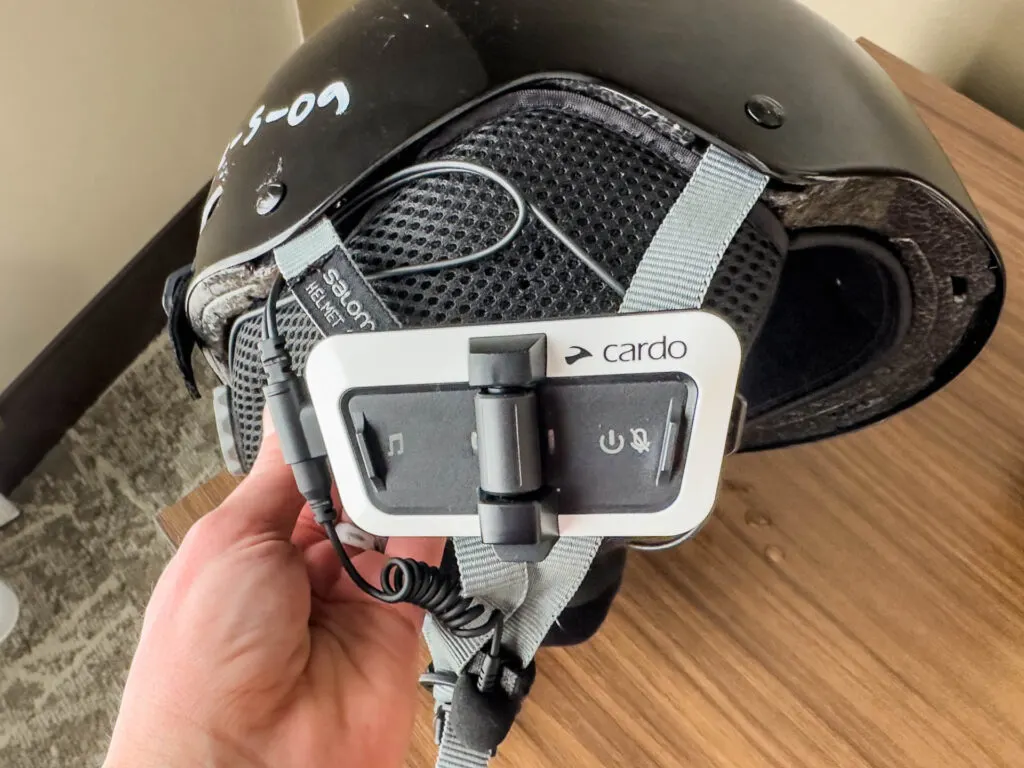
What you do is clip the main receiver device onto the triangle strap part of your helmet near your ears. You can also adhere it to the outside of your helmet if you don’t have compatible straps for some reason. Then, plug in the microphone and speakers and secure the mic to your chinstrap using the hook and loop attachment.
The speakers are next. There’s one for each ear, and they can either slide into the pocket inside your helmet if you have that sort of setup, or they can Velcro to the inner fabric. The unit also comes with stick-on hook and loop patches that you can adhere to the inside of your helmet if yours isn’t lined with any sort of material, like if it’s a climbing or whitewater kayaking helmet.
There are even little hook and loop fasteners so you can route the cables for the speakers along the inside of your helmet to keep them out of the way and from getting caught on things.
Now, I will say, depending on how you set it up within your helmet, it can kind of be a pain to switch it from helmet to helmet. If you only have one helmet that you plan to use this with, that won’t be an issue. But if you have multiple helmets for multiple different sports, you’ll have to swap it out and set it up every time you change helmets and possibly have to buy a few extra stick-on accessories for quicker transfers. A minor inconvenience with a hefty price tag: it’s $79.99 for a Second Helmet Kit setup.
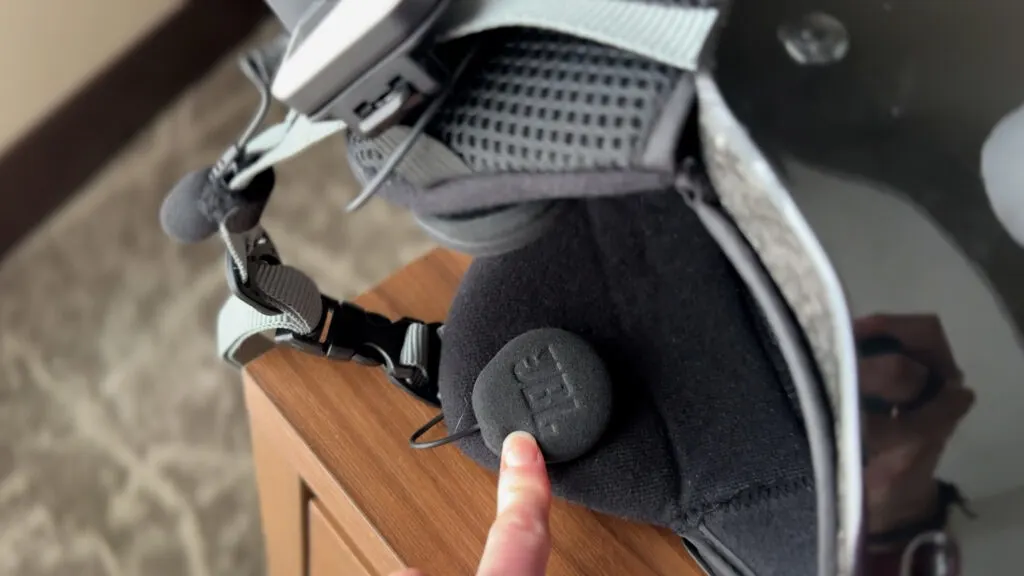
Fortunately, once you have it all set up in your helmet, it’s tolerably easy to use. You can use the app to control things like music and your intercom, or the dial and buttons on the outside of the receiver to play, pause, and adjust the volume.
As long as you’re connected via Bluetooth to your phone, you can also use voice commands like Siri to control most of the options as well, including to make and take phone calls.
It’s waterproof and has a one kilometer or 0.6-mile maximum range, but the more users you have connected, the larger that range can be. Think of it like a daisy chain. The connection can hop from user to user to user and extend how far away you can be from each other and still be able to chat. The maximum range is 5 km or 3 miles, which is pretty impressive. And you can connect up to 15 users–the Sena Pi only connects two–so you can keep chatting with your whole crew, even if you’re not cruising down the mountain at the same pace.
But let’s talk about how it actually performed on the mountain.
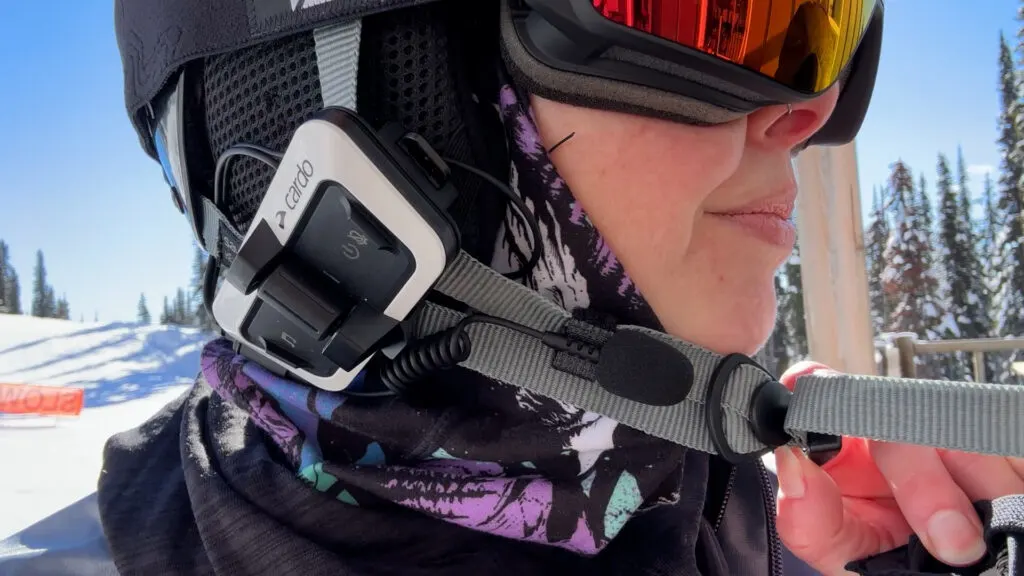
Test and Results
When I arrived at RED, I attached one of the PackTalk systems to my snowboard helmet and gave another one to a new friend (you can buy them as a pair or as individual units). Then we hit the lifts to see if they improved the mountain experience as much as I hoped they would. Now, I tested the Cardo Packtalk Outdoor with a fellow snowboarder who was much more advanced than I am, so we really tested the limits of the range. And yes, we found ourselves out of range fairly frequently.
But the intercom almost always reconnected automatically when I would catch up to her as she waited for me at the bottom of a run. There were a few times that it didn’t, but I’m going to blame that on user error when I was impatient and tried to push too many buttons to solve a problem that probably didn’t exist.
While I was strictly concerned with using the intercom to stay in touch to make sure I knew how to get down the mountain, she was comfortable listening to music while being connected via intercom.
And no, her music did not come through onto my intercom. Which is pretty cool. Plus, the sound quality of those JBL speakers was really impressive. I would certainly describe it as crisper and clearer than with the Sena devices we’ve tested. We could always hear what the other person was saying, no problem, and music and podcasts came through beautifully.
However, those speakers are pretty dang uncomfortable. At least in snowboard helmets. Both of us found that the speakers pressed too firmly on our ears and caused uncomfortable pressure points. I was able to alleviate some of that by moving the speakers forward to right in front of my ears, closer to my jaw bone joint, and was still able to hear sufficiently, but that does seem like a real problem. You’re not going to want to continue to use something if it’s uncomfortable.
However, the Cardo Packtalk is designed in such a way that you can swap out the speakers for your own headphones. It comes with an adapter, so you can plug in earbuds and use those instead. You will need those earbuds to have a built-in microphone, and they do have to have a traditional headphone plug, but that’s an extra nice option to have in case your helmet just doesn’t accommodate the size of the speakers or you find them uncomfortable.
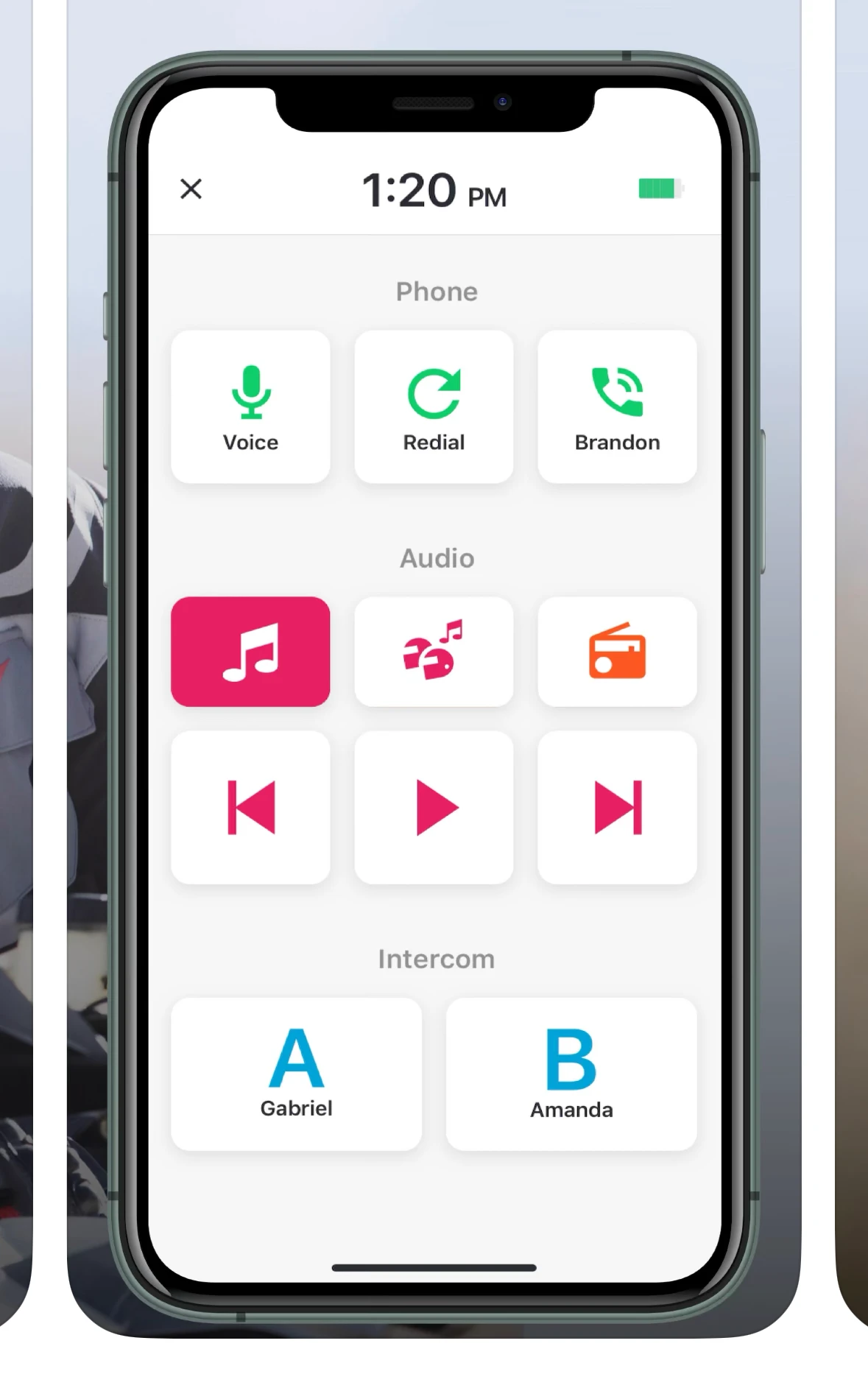
Likewise, while sound quality was excellent, you can’t adjust music volume and intercom volume separately using just the device. You have to go into settings in the app to adjust the volumes independently. So, when my fellow tester was listening to music, and I would speak to her through the intercom, she found the music at the perfect volume, but my voice was way too loud. She would have had to take a break in order to pull out her phone and dial in the perfect settings.
That said, you can really customize a lot of those settings and audio profiles, which techy folks will likely appreciate. Me? I just want to plug and play. The less complicated, the better.
Then there is the issue of price. The Cardo Palk outdoor system costs $250 per unit. $450 for a pair. That’s more than twice as much as the Sena pi. Now, the Cardo Packtalk is a higher quality product and quite a bit more involved when it comes to parts, pieces, and functionality. But still, that’s a pretty hefty price jump. It’s just something to consider if you’re trying to decide between two intercom systems and you’re on a budget. Though the limited range on the Pi wouldn’t do well for big mountain activities since it only has a range of 0.2 miles or 400 meters, so honestly, it’s not as well-suited for activities that naturally involve higher speeds or more space between participants.
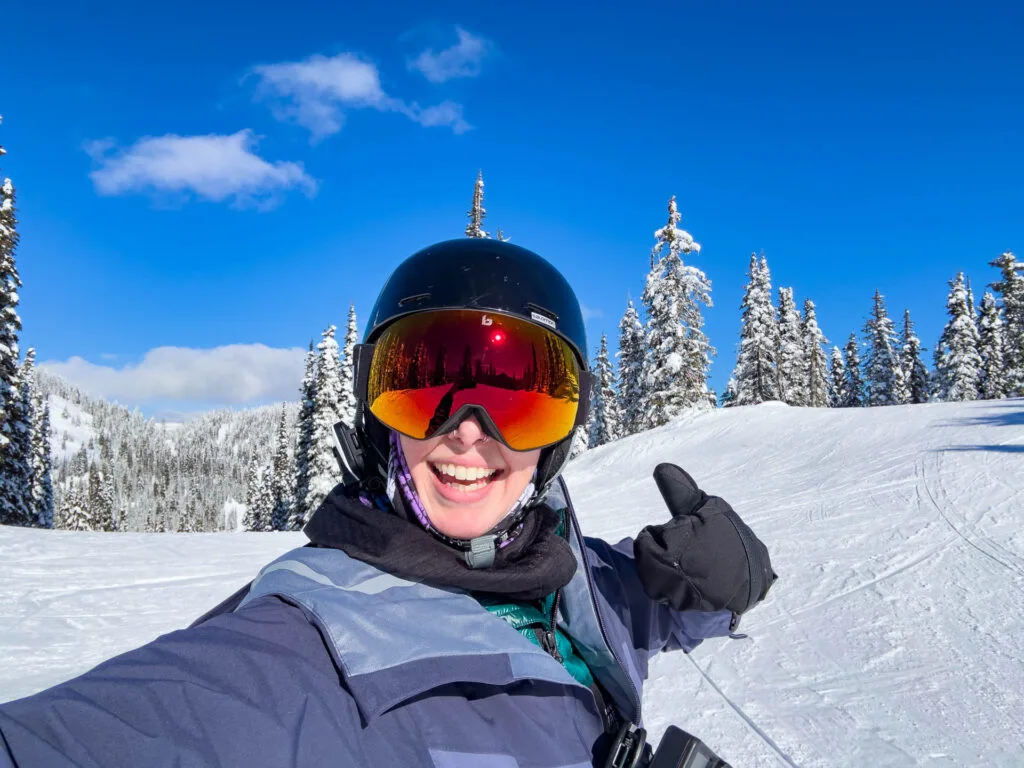
Pros:
- Let’s you chat with friends up to .6 miles away.
- Allows you to listen to music while you chat with friends (or instead of).
- Excellent sound quality.
- Fairly easy setup.
- Easy-to-use dials and buttons.
- Plenty of custom controls in the app.
- Voice-command compatible.
- Easy to mute and unmute quickly.
Cons:
- Expensive.
- Speakers can be uncomfortable.
- May be a hassle to move to a second helmet for other sports.
- Not a super large range when used by only 2 people.
Bottom Line: Who is the Packtalk Outdoor For?
All that said, the folks I think will really get the most out of the device and truly appreciate its functionality probably fall into two camps:
- If you regularly ride with a number of friends and family who have similar degrees of ability and plan on sticking pretty close together throughout the day, then you’re probably going to really dig these. I mean, it’s super nice to be able to chat with the other folks you’re playing outside with, share stories, give tips and pointers, update them on your exact location, share where you found some fresh pow, or when you’re planning on heading to the lodge for Après ski drinks.
- If you’re a guide or instructor who makes a point of staying close to your clients, whether kayaking, biking, or snowboarding, in order to give them direction, tips, or safety instructions. Honestly, if I were a snowboard instructor or guide, I would absolutely want a couple of these so I didn’t have to scream directions at folks from 50 feet away all day long. These would be brilliant for that.
Now, the Cardo Packtalk is probably not for people with high, varying degrees and levels of skill. Like I said, I was more often out of reach of my snowboarding companion than I was within reach because she was so much more advanced than me and would get too far ahead or outside of bounds frequently without even trying. I’m slow, what can I say? I’m still learning OK?
My fellow tester also commented that because she was so much more advanced and having way more fun shredding down the mountain while I spent a lot more time falling on my butt, she felt bad about hooting and hollering and making joyful noises while I was groaning and growling every time I had to pick myself back up. Basically, she felt bad that she was having more fun than me, and knowing that I could hear her having fun made her feel a little guilty because she’s a super nice human.
But even so, this is a cool system with super high-quality sound that’s pretty versatile, and I think a lot of people with deep enough pockets to afford it are absolutely going to appreciate it. Honestly, if you were the kind of social outdoorist who likes to chat and stay connected and enjoy the company of the friends and family you’re riding with, you’re definitely going to dig the Packtalk system.
It’s not for everybody, though, and the comfort factor may require a bit of trial and error and finagling until you can find a way to get it dialed in just right so it doesn’t bother your ears. I don’t love when something with such a high price tag has to be tweaked or customized right out of the box in order to be truly enjoyable to use, but overall, functionality is excellent. So if you have the budget and think it makes sense for you, then what the heck? Go for it.
As long as you’re planning to stick relatively close together while you recreate, that is. Either way, stay connected as you wander on this season!
•
Looking for more more ski- and snow-related content? Check out our favorite new sustainable ski kit here, the best sustainable ski goggles, and a comparison of insulated vs. non-insulated shell jackets!
•
This post contains affiliate links, which means when you clicky-click and make a purchase, we may receive some compensation. Don’t worry, it won’t cost you any extra, but you will be supporting Terradrift! That’s what we call a win-win!
Alisha is a freelance outdoor journalist and photographer based in Ogden, UT. She loves backpacking, hiking, mountain biking, kayaking and snowboarding (even though she’s terrible at it). She’s also pretty sure she’s addicted to coffee. alishamcdarris.com
